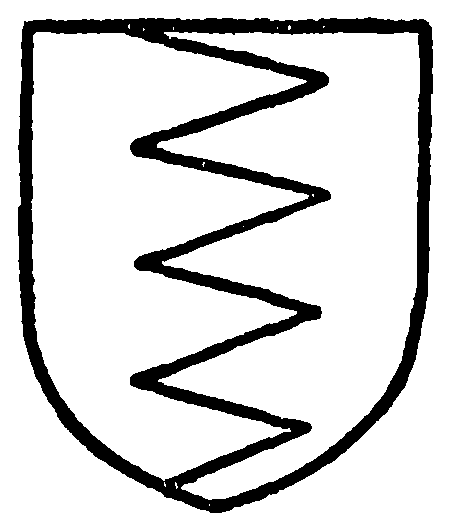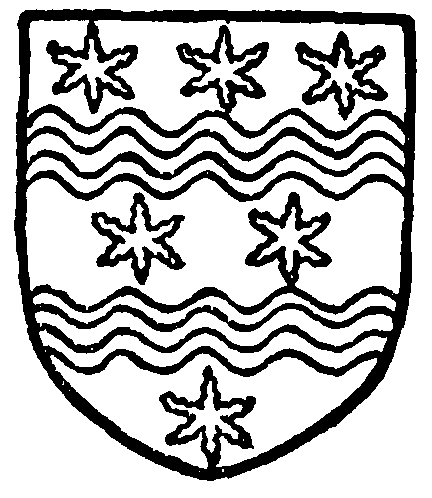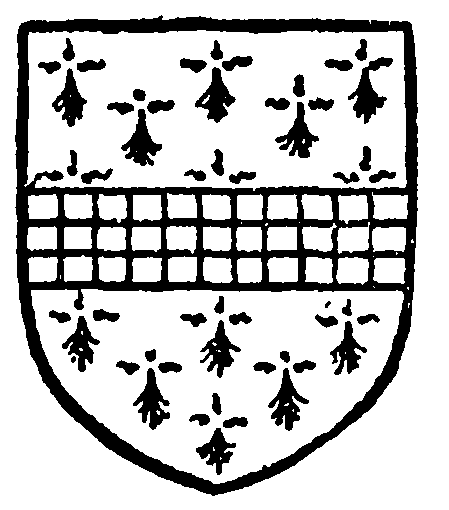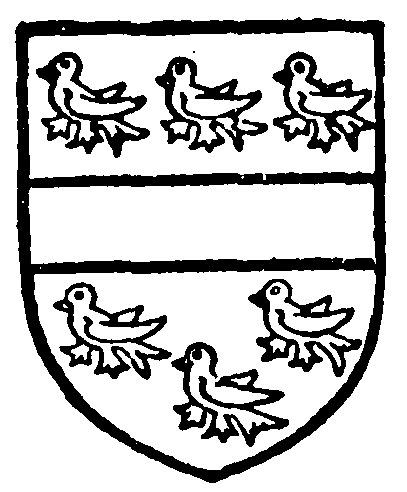Pages 345-348
A History of the County of Worcester: Volume 4. Originally published by Victoria County History, London, 1924.
This free content was digitised by double rekeying. All rights reserved.
In this section
STOCKTON ON TEME
Stotune (xi cent.); Stokton (xii cent.).
Stockton is bounded on the south-west by the Teme and on the south-east by a tributary of that river. It is also watered by another stream flowing south through the parish. The surface is hilly, the land in the north of the parish being 500 ft. above the ordnance datum, while that along the river bank is liable to floods. It has an area of 799 acres, of which 167 are arable land, 564 permanent grass, and 23 woods and plantations. (fn. 1) The soil is clay, the subsoil Old Red Sandstone. The chief crops grown are beans, fruit and hops.
The village is situated on the road from Tenbury to the Hundred House, and on another branching south from it. It consists mostly of 18th-century and modern brick cottages at the foot of the hill east of the church. The church stands by the main road, and near it are the rectory and a few houses and cottages. Stockton House, the residence of Mr. Douglas William Eshelby, M.D., is a late 17th-century square brick house of two stories and an attic, with original curvilinear end gables, and a chimney at each of the four corners. The main entrance on the south-west admits directly to a staircase hall which communicates with the other rooms. There is a corn-mill on the stream which runs close by.
MANORS
At the date of the Domesday Survey STOCKTON was held by Roger de Lacy, and had previously been held by Godric (fn. 2) By the beginning of the 14th century the overlordship had passed to the Beauchamps Earls of Warwick, (fn. 3) forming part of the honour of Elmley Castle, (fn. 4) of which Stockton was held as late as 1542–3. (fn. 5)
Nothing is known of the tenants of this manor until 1254, when William de Birmingham obtained a grant of free warren in his demesne lands of Stockton. (fn. 6) William de Birmingham was killed at the battle of Evesham in 1265. (fn. 7) His son William (fn. 8) obtained a confirmation of the grant of free warren in 1283. (fn. 9) It was probably his son who held Stockton in 1316 (fn. 10) and in 1318. (fn. 11) According to Dugdale five generations of this family in succession were called William, and the last William, who was living in 1331–2, was succeeded by his son Fulk. (fn. 12) In 1347 Fulk de Birmingham and Joan his wife conveyed the manor to Richard Clodshall, (fn. 13) who appears to have been already holding it under the Birminghams for life, since he was returned in 1346 as holding half a fee in Stockton which William Fokerham formerly held, (fn. 14) and William Fokerham had held the manor in 1316 under William de Birmingham. (fn. 15) Richard Clodshall leased the manor-house of Stockton in 1420 to Hugh Nicholls alias Parker, Idonea his wife, and Richard son of William Hancokes. (fn. 16) In 1428 Hugh Parker was holding Stockton by reason of the minority of the son and heir of Richard Clodshall. (fn. 17) This son must have been dead before 1431, and his estates inherited by his sister Elizabeth, as in that year Stockton was held by Robert Arderne, (fn. 18) who married Elizabeth daughter and heir of Richard Clodshall. (fn. 19)

Birmingham. Party indented argent and sable.

Clodshall. Gules six stars between two gimel bars wavy or.

Arderne. Ermine a fesse checky or and azure.
The manor then followed the descent of Pedmore (fn. 20) until 1531, (fn. 21) when Thomas Arderne sold it to Thomas Walshe, king's remembrancer, (fn. 22) Thomas Parker, clerk, having in the previous year surrendered to Thomas Arderne all his right in the manor. (fn. 23) Thomas Walshe leased the manor and demesnes in 1533 to John Parker of Stockton for sixty years. (fn. 24) Thomas is described on his son's tombstone at Stockton as a baron of the Exchequer, and second son of John Walshe of Shelsley Walsh. (fn. 25) He died in London on 8 May 1542. His heir was his son Anthony, (fn. 26) but by 1559 the manor was in the hands of his son Thomas, (fn. 27) who died in London on 21 November 1593. His cousin Thomas Walshe, son of his father's brother Richard, was his sole executor. (fn. 28) To this cousin he bequeathed the manor for 100 years, to hold at a yearly rent of £10, payable to his heirs at law. These seem to have been his great nephews Sir Richard Paulet and Thomas Lambert, (fn. 29) and Anne wife of Sir Thomas Bromley of Holt. (fn. 30) The latter in 1616 sold her third to Thomas Walshe, then holding Stockton under the will of Thomas Walshe of London. (fn. 31) Thomas Walshe, at the marriage of his son Richard with Mary Clempson, settled on the latter a jointure out of his manor of Stockton. (fn. 32) He died about 1640, and was succeeded by Richard. (fn. 33) Richard Walshe was followed between 1649 and 1653 by his son Edward, (fn. 34) who was still holding the manor in 1679. (fn. 35)

Walshe. Argent a fesse between six martlets sable.
By this date it seems probable that the other two-thirds of the manor had come into the possession of the Walshes, as Edward was dealing with the whole manor. The third which had passed to Thomas Lambert was held by William Lambert in 1666, when he and his wife Frances and Robert Lambert and his wife Ruth (fn. 36) conveyed it to William Bund and William Bagnall. After this time the Lamberts do not again appear in Stockton.
Sir Richard Paulet's share passed on his death in 1614 to his daughters, Lucy wife of Sir Thomas Jervoise, and Anne wife of Sir William Young, (fn. 37) who conveyed it in 1618 to Sir Nicholas Halswell, (fn. 38) possibly for the purpose of settling it on Lucy Jervoise, for in 1637 it was held by Sir Thomas Jervoise and Lucy. (fn. 39) Sir Thomas, who seems to have settled the manor in 1646 on his second wife Frances daughter of Thomas Jay, (fn. 40) was succeeded in 1654 by his son Thomas. (fn. 41) Thomas settled it in 1657 on his wife Mary, daughter of George Purefoy, (fn. 42) but after this date the name Jervoise does not again appear in connexion with the manor.
In 1687 the whole manor belonged to Edward Walshe, sen., Susan his wife, Edward Walshe, jun., and Elizabeth Walshe. (fn. 43) Before 1693 it had passed to Thomas Walshe, M.D., who left it in 1728 to his cousin William Walshe. (fn. 44) William Walshe alias Mosely held it in 1759, (fn. 45) and in 1769 he or a namesake conveyed it to Thomas Cobb. (fn. 46) In 1828 it was conveyed by Bartholomew Jeffery and Wilhelmina his wife, and by Charles Lewes Spitta and Mary his wife, to Benjamin Austen. (fn. 47) It had passed before 1830 to John Berry, (fn. 48) and was purchased of him shortly after by Mr. Jones of Abberley, (fn. 49) with which manor it has since been held.
A second estate at Stockton, known from the 16th century as the manor of STOCKTON, was held in 1405 of Catherine Musard. (fn. 50) A messuage and carucate of land granted by Hugh Poer to Hugh Cooksey in marriage with his daughter Juliana was the subject in 1333 of a suit for dower brought by Isabel widow of Walter Cooksey, grandson of the last-mentioned Hugh, against her brother-in-law Hugh Cooksey, Walter's heir. (fn. 51) In 1405 Hugh's son, Sir Walter Cooksey, died seised of the manors of Stockton and Orleton, (fn. 52) and Stockton apparently descended with Orleton until 1671, when it is mentioned for the last time. (fn. 53)
There was a mill at Stockton worth 20s. in 1086. (fn. 54) It seems subsequently to have been acquired by the Lovetts, and by an undated deed was leased to Henry Mercer by Henry Lovett. This lease was transferred by Henry Mercer to William de Birmingham, who undertook to pay a pair of gloves yearly to Henry Mercer and the rent due to Henry Lovett. (fn. 55) The mill was finally acquired by William de Birmingham in 1303–4 of John Lovett of Lyn (co. Devon). (fn. 56) In 1347 Sir Henry de Birmingham surrendered to Sir Fulk de Birmingham all his right in the mill, which he had for life by gift of his brother William de Birmingham. (fn. 57)
CHURCH
The church of ST. ANDREW consists of a chancel 22 ft. 3 in. by 15 ft. 7 in., nave 42 ft. 10 in, by 18 ft. 7 in., south porch 6 ft. 5 in. by 8 ft. 11 in., and a west bell turret above the nave roof. These dimensions are all internal.
The church was built about the middle of the 12th century, but only the nave of the original building remains; the chancel, said to have been rebuilt in the 14th century, fell down in 1718 and was again rebuilt on the old foundations during the following ten years. The timber south porch dates from the 14th century, when the nave was strengthened by diagonal buttresses and re-roofed, and probably the bell turret was added at the same time. The fabric was thoroughly restored in 1845–6, the north wall of the nave being rebuilt, new windows inserted in the chancel and nave, and the plaster ceiling removed from the latter. There was a further restoration in 1898. The nave is built of coursed sandstone rubble, faced internally and externally; and the chancel is of red brick with stone dressings, the walls being plastered internally. The chancel, nave, and porch have tiled roofs. The square bell turret is covered with weather boarding, which is continued so as to cover the whole of the west gable of the nave; it has louvred lights on the north, south, and west, and is surmounted by a pyramidal slated roof.
At the 18th-century rebuilding of the chancel some old stones were re-used in the walling, but all the present details are modern. There is an east window of three pointed lights with rear arches springing from detached shafts, a lancet window in the north wall, and a lancet and a pointed doorway in the south wall. The chancel arch dates from the 12th century; it is semicircular and of two orders, the outer a large roll supported on shafts with cushion capitals, chamfered abaci, and moulded bases, and the inner order square and continued down the jambs. The shafts, with their capitals, bases, and abaci are modern, and the arch has been restored. A chamfered string-course, continued from the abaci along the east wall of the nave, is original.
Above the chancel arch on the nave side are two 12th-century panels with carved figures in relief, one of which represents the Agnus Dei and the other a lion, perhaps symbolical of the Lion of Judah; on the south side of the arch is a blocked squint with a modern lintel. This was disclosed, as also were the panels, on the removal of the plaster from the nave walls in 1898. In the north wall there is a single trefoiled light, and to the west of it a window of two trefoiled lights under a square head; both are modern, but the internal jambs are old, and were evidently reused when the wall was rebuilt. In the south wall, near the east end, is a window of two trefoiled lights under a square head, the internal jambs and ribbed rear arch of which are probably of the 14th century, but the outer stonework is modern. The south doorway, to the west of this, has a semicircular head of two orders, the outer a large roll supported by shafts with cushion capitals, chamfered abaci, and moulded bases, and the inner order square with star enrichment on the outer face. Most of the stonework of this doorway has been renewed, but some of the jamb stones are of original 12th-century date. Above the head is a 12th-century stone panel, with a very much weatherworn figure in relief of a winged animal with a rudely formed tree above. To the west of the doorway is a modern buttress apparently blocking a window, as there are indications of a blocked opening in the inside walling. In the west wall is a 14th-century window of two trefoiled lights under a two-centred traceried head, which has been repaired with cement. The nave walls are strengthened at the two western corners and at the north-east by diagonal buttresses of the 14th century.
The porch is constructed of heavy oak timbers consisting of two main trusses, each of which has curved struts forming an arch with an ogee apex cut in the cross beam; the space between the trusses is filled by boarding with open lights above, and the roof is strengthened by cusped wind braces. Above the entrance is a foiled barge-board, with the cusping partly broken away; the mullions of the open lights have been renewed, but the structure, which stands upon a modern brick base, is generally intact, and is a fine example of its type. The chancel has a flat plaster ceiling with a central truss. The nave has a fine open-timber roof of the 14th century, consisting of main trusses with collars, chamfered tie-beams, king-posts and curved struts, and subsidiary trusses, repeating the collars and stiffened by curved wind braces. The second beam from the east is modern.
The font has a plain octagonal bowl, probably of the 14th century, with a modern shaft and base. The pulpit is modern. The oak altar with turned legs is of late 16th-century date, and the altar rails with slender turned balusters are of the late 17th or early 18th century. On the floor at the south-west of the chancel there are several encaustic tiles of about 1450; one group of four forming one design has 'Deo Gracias' repeated four times in a circular border, and on another tile are the arms of the see of Worcester.
On the nave floor near the chancel arch is a small brass figure of a man in fur-lined cloak with the following inscription below, 'Of your cheryte pray for the sowlhs of Wyllyam Parker Sebyll and Elizabeth hys wyfys ye whych Wyllyam died the xxv day of Febyere in the yere of owre lord god m.ccccc and viii.' In the south-west corner of the chancel is a wood painted tomb consisting of a rectangular pedestal with panelled sides containing painted shields, surmounted by a canopy supported by turned posts. On the flat top of the tomb are the arms of Walshe differenced by a ring, and on the sides are the arms of Walshe, Walshe and Saxilby, Saxilby and Gainsford, and Walshe and Blount, while at the back and sides of the canopy are those of Bar and Walshe, Walshe of Shelsley, Walshe of Abberley, Paulet and Walshe, Lambert and Walshe, and Walshe of Stockton. At the back of the tomb is the following inscription: 'The tombe of Thomas Walshe esquier Lord of this manor and patron of this church who departinge this life at London the 21 of November his bodye was hither translated the 21 of December A[nn]o D[omin]i 1593 by his cosine jarmaine Thomas Walshe gent his sole Executor the Erector of this tombe.' Round the edge of the flat top is a Latin inscription, partly concealed by the west wall, stating that the above-named Thomas Walshe was the son of Thomas Walshe, one of the barons of the Exchequer to Henry VIII, and Catherine his wife, daughter of John Saxilby, chief clerk of the household to Henry VII, and Elizabeth his wife; Elizabeth was the daughter of John Gainsford of Surrey. Thomas Walshe, the father of the Thomas here commemorated, was the second son of John Walshe of Shelsley Walsh and Margaret his wife, who was the sister of Sir Edward Blount of Sodington. At the back of the canopy is the inscription, 'Such as you are such were we. But such as we are now such shall you bee.' This tomb was restored and repainted in 1856, and is evidently not in its original position, the west end being now concealed by being placed against the wall. There are two ancient stone slabs now placed against the modern buttress on the south side of the nave. The lower parts of both have been broken away; one is carved with a large cross formy within a circle with two similar but smaller crosses below, all of which have long irregular shafts extending to the foot; the other has an edge groove and a simple mark near the head consisting of a tau cross standing upon two conjoined saltires. These stones are probably of 12th-century date.
The bell turret contains three bells; the treble is dated 1849 and uninscribed; the second is of about 1410 with the inscription in Gothic capitals 'Sancte Andria ora pro nobis,' a square initial cross and heads of a king and queen; and the tenor, John Martin's earliest bell, is inscribed, 'Mandat Jehova orat Ecclesia campana vocat. T.R. Rector 1644. N.F. W.R. C.W.'
The communion plate consists of a silver cup and cover paten of 1571, and a modern chalice, paten, and flagon.
The registers before 1812 are as follows: (i) all entries 1539 to 1772; (ii) all entries 1774 to 1812; (iii) marriages 1755 to 1812. There is also a transcript of the first book.
There is a fine yew tree in the churchyard to the south-west of the church.
ADVOWSON
The church is first referred to in 1284, when the presentation was made by the lord of the manor, William de Birmingham. (fn. 58) The advowson was held with the manor until 1769, (fn. 59) and was apparently so held in 1828, (fn. 60) although in 1770 the patron was the Rev. Theophilus Houlbrooke, the incumbent. (fn. 61) He held the advowson, possibly by grant of the owner of the manor, until about 1834, when it seems to have been similarly held by the Rev. W. F. Raymond, incumbent, until 1888. (fn. 62) Since 1888 it has again been held by the lord of the manor.
There do not appear to be any endowed charities subsisting in this parish.


